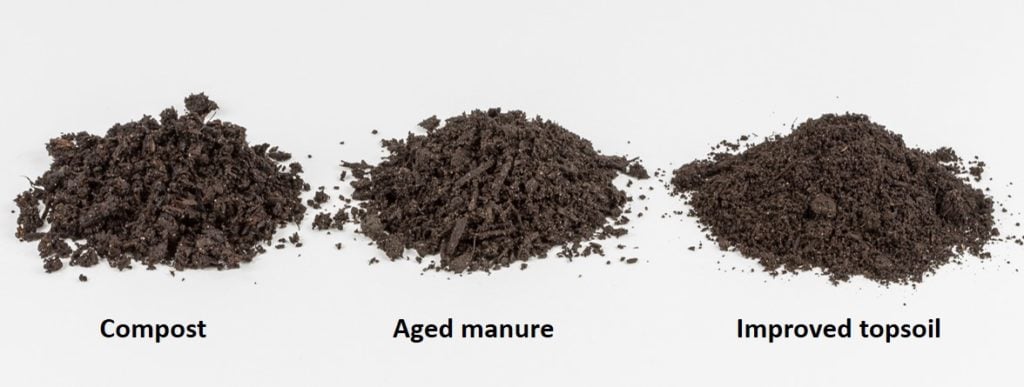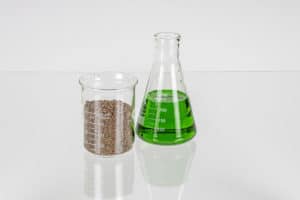An amendment is any material that is added to garden soil to improve or enhance its characteristics, such as structure or fertility. Also, amendments can be used to alter a soil’s pH. Compost, worm castings, manure, lime, and sulfur all qualify as soil amendments. Strictly speaking, fertilizers can be considered amendments as well, but in general, we view amendments as soil enhancers, builders, or improvers as opposed to straight nutrients.

The general area surrounding your garden site such as your town, city or county and the impact of any conditions that could impact your garden such as a prevailing soil type, mountains, valleys and anything else that can exert influence over a large area.
An average range of weather conditions in a particular place. Can include your Regional, Area and Microclimates
Cultivars are variations of a plant species that are intentionally bred or cultivated by plant growers. It could be a unique flower color or leaf variegation. Typically a cultivar is made by grafting plants or from cuttings of a mutated plant that are then further propagated until a large enough stock is available for commercial distribution. Other times they are made by hybridizing two different species or varieties. Basically, without human intervention cultivars would not exist.
Dividing is when you dig up a perennial and either pull or cut it apart into sections or divisions. Older perennials grow poorly, and dividing reinvigorates them. Dividing also keeps perennials from overgrowing or encroaching on neighboring plants. Most often, dividing is done to increase plant stock. You can cut a large perennial into sections and replant those sections elsewhere in the garden, and dividing allows you to share your plants with a gardening friend!

A natural or synthetically derived material that is used to deliver nutrients to plants. Fertilizers come in dry or liquid form. Fertilizers can consist of a single nutrient or mixture of many plant nutrients.

Groundcovers are plants that cover the ground. Typically groundcovers are low growing, spreading plants that grow tightly together into one continuous mass. However, any plant that adequately covers the ground in this manner can be a groundcover. So a patch of bamboo that is 30 feet tall could technically be considered a groundcover.
All of the conditions specific to your site: Soil, Sun, and Specific conditions (Wind, Structure, and Variables)
The three primary nutrients or “Macronutrients” that most plants need are Nitrogen (N), Phosphorus (P), and Potassium (K). They are the common ingredients in most fertilizers and can be purchased in dry or liquid form. Commercial fertilizers will provide the detailed Guaranteed Analysis label of all the nutrients present in the fertilizer. On the label, there will be three numbers separated by dashes that will indicate the percentage (by weight) of nutrients in each package.

So a 50 pound bag of 5-10-5 contains:
5% nitrogen or 2.5 pounds per bag (.05 x 50lbs = 2.5lbs)
10% Phosphorous or 5 pounds per bag (.1 x 50lbs = 5.0lbs)
5% Potassium/Potash or 2.5 pounds per bag (.05 x 50lbs = 2.5lbs)
The remaining 40 lbs of the bags weight is filler (and sometime intermediate and micro-nutrients as well) to help you spread the fertilizer at an even rate over a given area.
For gardeners a regional climate is best defined by referring to the USDA Plant Hardiness Zone Map in the “Toolbox” area of the Garden Tutor site. Zones are based on average monthly minimum temperatures and act as a good guide when selecting plants. It is worth noting that Area and Microclimate differences can allow you to select plants just outside of you hardiness zone. So use zones as a guide but not as gospel.
The medium that plants grow in, and it consists of air, moisture, minerals, and organic matter. It also includes organisms that help breakdown organic matter.
Soil horizons are bands of differing soils that change with depth. These changes can be in color (darker shades indicating more organic material), hardness, and type.
Soil Structure refers to the way soil particles are bound together. For practical reasons, think of structure as the shape of the soil particles. The soil minerals bind with the organic matter to form aggregates of various shapes. Some of the shapes are granular, platy, and blocky. In general the “ideal” soil structure is granular but ultimately this depends on the plants you are growing and what they prefer.
Texture refers to the size and distribution of the soil particles and is most influenced by the mineral content. All soil texture types are made up of a combination of Sand, Silt, and Clay.
A type of gardening that utilizes plants that require very little irrigation or added fertilizers to thrive. In general the goals of xeriscaping are to:
- Use plants suited to your environment.
- Use mulches to retain moisture.
- Use efficient watering techniques and devices.
- Maintain the proper soil conditions for your plants.
